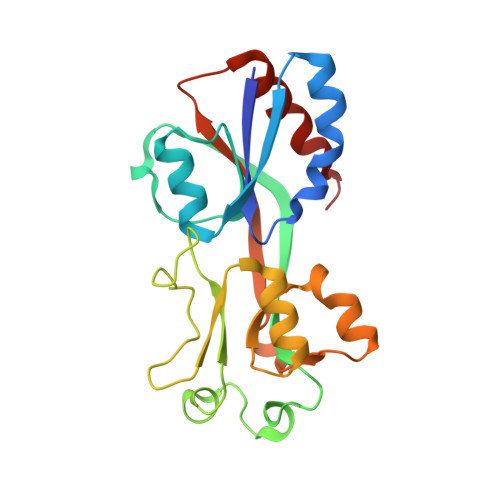Structural basis of transcription factor YhaJ for DNT detection.
Kim, M., Kang, R., Jeon, T.J., Ryu, S.E.(2023) iScience 26: 107984-107984
- PubMed: 37822509
- DOI: https://doi.org/10.1016/j.isci.2023.107984
- Primary Citation of Related Structures:
8H58, 8H5A - PubMed Abstract:
Detection of landmines without harming personnel is a global issue. The bacterial transcription factor YhaJ selectively detects metabolites of explosives, and it can be used as a key component of DNT biosensors. However, the wild-type YhaJ has a binding affinity that is not sufficient for the detection of trace amounts of explosives leaked from landmines buried in the soil. Here, we report crystal structures of the effector-binding domain of YhaJ in both the apo- and effector-bound forms. A structural comparison of the two forms revealed that the loop above the primary effector-binding site significantly switches its conformation upon effector binding. The primary effector-binding site involves hydrophobic and polar interactions, having specificity to hydroxyl-substituted benzene compounds. The structures explain the mechanism of activity-enhancing mutations and provide information for the rational engineering of YhaJ biosensors for the sensitive detection of explosives.
Organizational Affiliation:
Department of Bioengineering, College of Engineering, Hanyang University, Seoul 04673, Republic of Korea.















